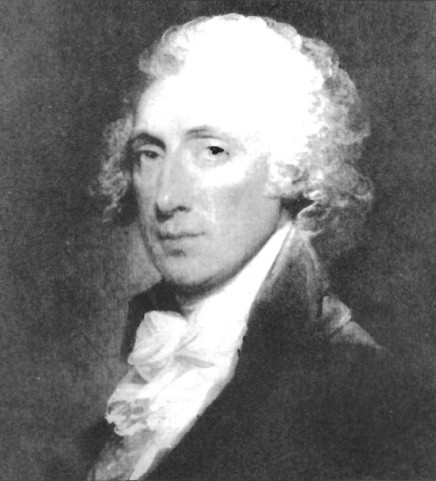
William S. Smith
The First Marshal of New York

The First Marshal of New York William S. Smith's biographer described him as "the pattern of the eighteenth century gentleman, handsome, brave, urbane, and equally at ease at camp or court." The description is appropriate, for in addition to being Marshal of the District of New York, Smith was also a soldier, diplomat, congressman, and the son-in-law of President John Adams.
Born in New York on November 8, 1755, Smith graduated from the College of New Jersey (Princeton) in 1774 before entering the practice of law. But before he could establish himself as a lawyer, the Revolutionary War interrupted his career. He entered the service in August 1776 as a major, serving as an aide to General Sullivan. That same month, he fought at the battle of Long Island. When the Americans withdrew, he was among the last to leave, accompanying General Washington on the latter's barge across the East River. He was wounded in the fighting at Harlem Heights, which did not prevent him from helping destroy a bridge at Throgs Neck, thereby preventing the British General Howe from out-flanking the American forces. He fought again at White Plains and accompanied the American retreat across New Jersey. His gallantry at the battle of Trenton earned him a promotion to the rank of lieutenant colonel. He also fought at the battles of Monmouth Courthouse and Newport. Afterwards, he became an inspector and adjutant in a corps of light infantry under the command of the famous French general, the Marquis de Lafayette. Washington appointed Smith his aide in July 1781.
Smith performed valuable services for the Commander-in-Chief at Yorktown. After the war, he supervised the evacuation of the British from New York in accordance with the treaty of peace.
In 1785, Smith was appointed the secretary of the American legation in London, where he served under Minister John Adams. A year later, he married his boss's daughter. His diplomatic career included several missions to Spain and Portugal.
Smith and his wife returned to the United States in 1788. The following year, when Smith was 33, Washington, appointed him Marshal. Since New York City was the nation's capital during the first year of the new government, Smith dealt personally with the President in the performance of his duties. He also dined with Washington on many occasions during 1789-90.
He resigned as Marshal after one year in office to become supervisor of the revenue. Some time later, he took the job of surveyor of the port of New York. These positions, combined with his private business affairs, brought him a degree of wealth. In 1786, for example, he owned $3,800 worth of continental debt certificates. In addition to these activities, Smith was one of the founders of the Society of the Cincinnati.
When Jefferson assumed the presidency in 1801, Smith surrendered his positions within the federal government and returned to his private pursuits. Early in the new century, he became involved in the Miranda expedition, a poorly planned and illegal filibustering attempt against Venezuela. Although arrested and clearly guilty of the offense, Smith obtained an acquittal. In 1812, he was elected to Congress as a member of the fading Federalist party. He retained his seat until his death on June 10, 1816, at the age of 61.

